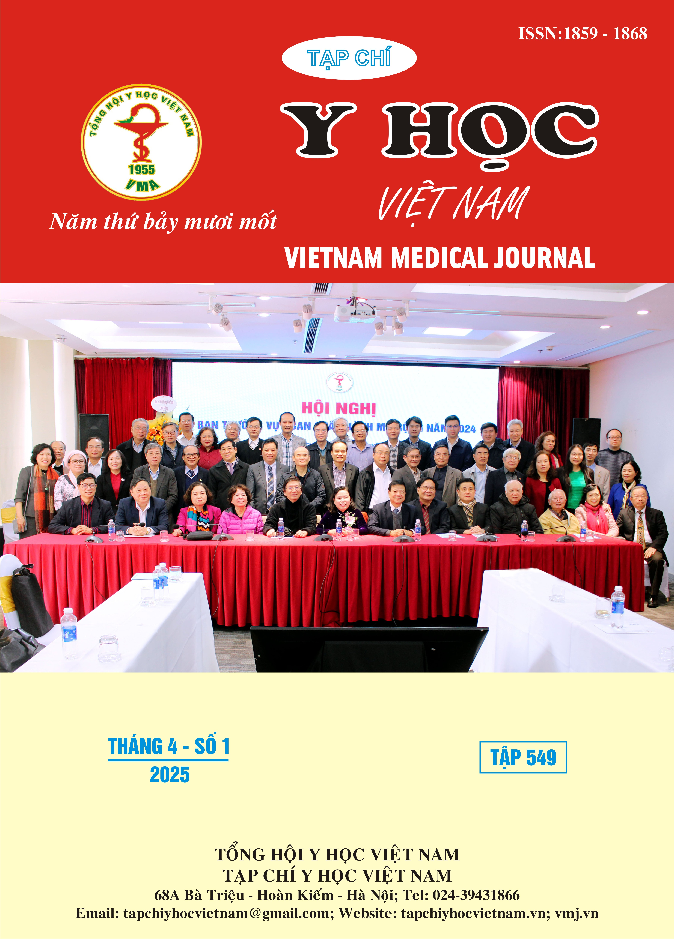STUDY THE SUV MAX OF PET/CT IN LUNG EPITHELIAL CARCINOMA
Main Article Content
Abstract
Backgroud: Lung cancer is a fairly common malignant disease of the respiratory system. Lung cancer if detected late, very poor prognosis, very high mortality and death in a short time since the detection of the disease. PET/CT in the diagnosis and assessment of non-small cell lung cancer stage, especially lung carcinoma, is increasingly confirmed. Objective: To investigate the SUV max value of primary epithelial lung cancer on PET/CT. Object and method: 24 patients diagnosed with lung epithelial carcinoma were identified by histopathology (biopsy, surgery). Research design: Retrospective study. Materials: PET/CT Biograph True Point - Siemens - Germany. CT scan with parameters of 80mA, 140KV, rotation speed of 0.5s/tube, thickness of 4.25mm, scan length of 867mm and time of data acquisition is 22.5s. Radioactive was F-18 FDG (2-fluoro-2-deoxy-D-glucose) at dosage 0.15-0.20 mCi / kg body weight (7-12mCi) intravenously. PET/CT was performed after injection of F-18 FDG 45-60 minutes. Results: Most cases of lung carcinoma of epithelium at age> 50 years. The lowest age was 34, the highest age 74, mean age was 58.1 ± 8.1 years. Male accounts for more than women. Tumors located in the left lung or right lung with similar proportions. The smallest tumor is 2cm in diameter; the largest tumor 8.2cm; average 4.7 ± 1.9 cm. The lowest SUV max at 1.81 cm; highest 21.03 cm; average 10.8 ± 4.2 (cm). Conclusion: Determining the SUV max value is very significant in the diagnosis of adenocarcinoma of the epithelial lining, which contributes to the therapeutic orientation as well as post-treatment follow-up.
Article Details
Keywords
SUV max, lung epithelial carcinoma, primary tumor
References
2. Society A.C. (2006), Cancer Facts and Figures. www.cancer.org.
3. Nguyễn Bá Đức (2006), Tình hình ung thư ở Việt Nam giai đoạn 2001-2004. Tạp chí Y học thực hành, pp. 9-19.
4. Dela Cruz C.S., L.T. Tanoue, and R.A. Matthay (2011), Lung cancer: epidemiology, etiology, and prevention. Clin Chest Med, 32(4), pp. 605-44.
5. Mai Trọng Khoa (2013), Ứng dụng kỹ thuật PET/CT trong ung thư, pp. 245-270.
6. Özgül M.A, Kirkil G et al (2013), The maximum standardized FDG uptake on PET-CT in patients with non-small cell lung cancer, Multidiscip Respir Med, 8(1): 69.
7. Dijkman BG S.O., Vriens D (2010), The role of 18F-FDG PET in the differentiation between lung metastases and synchronous second primary lung tumours. Eur J Nucl Med Mol Imaging, 37(11), pp. 2037-2047.


